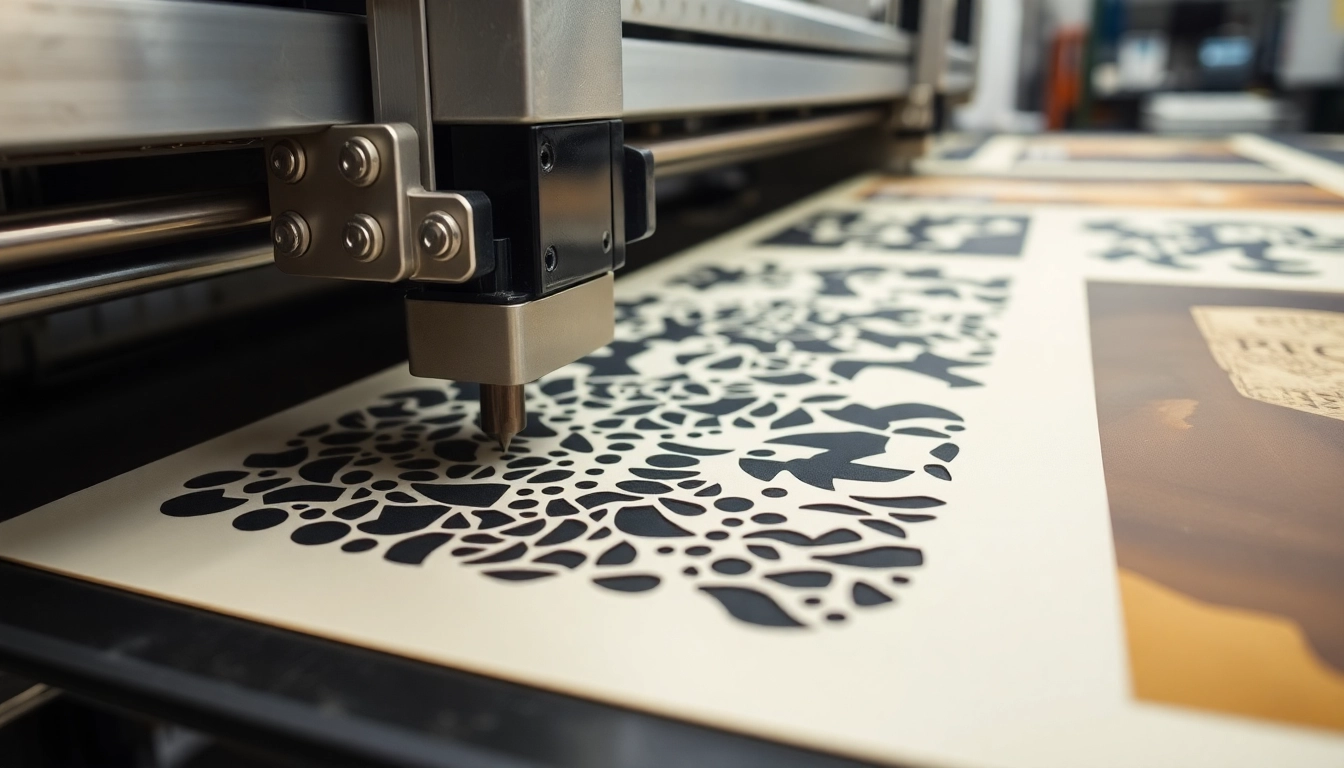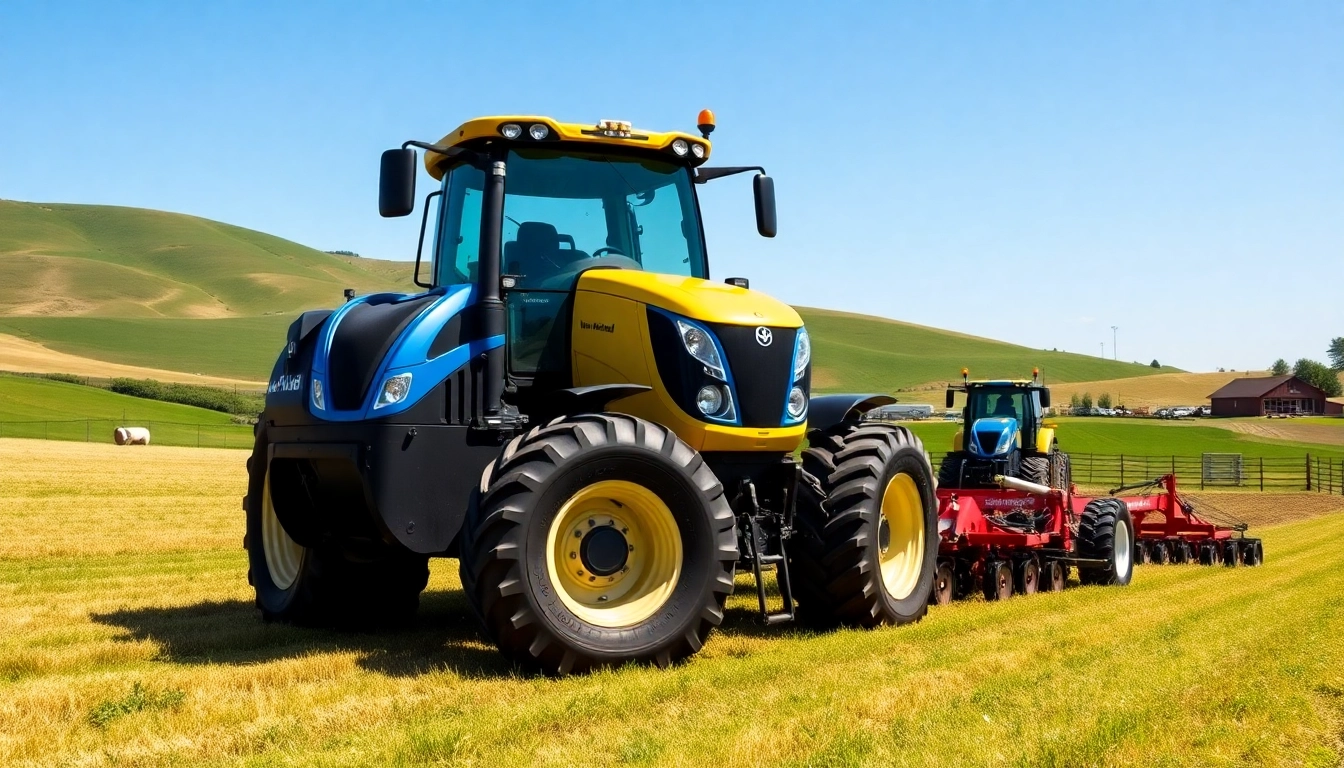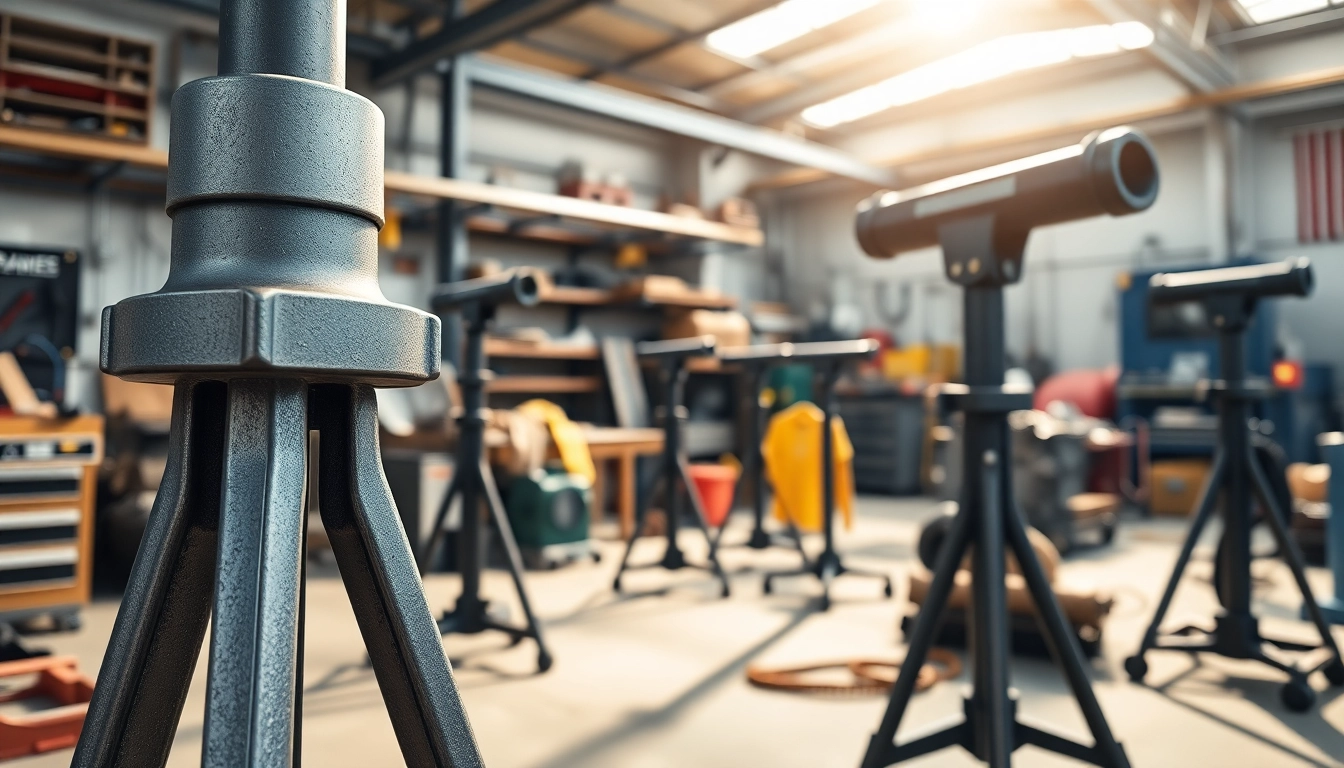Understanding Precision Die Cutting
Precision die cutting is an essential manufacturing process that transforms sheets or rolls of material into custom shapes and components. This highly versatile method is used across various industries, including packaging, electronics, automotive, and medical devices, ensuring quality and efficiency in production. As technology evolves, precision die cutting remains at the forefront of industrial fabrication, enabling companies to meet specific design requirements with high accuracy.
What is Precision Die Cutting?
At its core, precision die cutting entails using a sharp blade to cut materials into precise shapes. This process can involve various types of tooling, which include flat dies, rotary dies, and laser-cut technologies. The goal is to achieve clean cuts with tolerances as low as +/- 0.005 inches, directly impacting the quality of the final product. Industries frequently leverage this technique for producing intricate designs or repetitive shapes, fulfilling both small and large-scale production requirements effectively.
History and Evolution of Die Cutting Techniques
The origins of die cutting trace back to the early 19th century, when mechanical presses were first developed. These early machines allowed manufacturers to create uniform shapes from various materials, setting a foundation for future advancements. Over the decades, multiple innovations have emerged, including automated die cutting systems and computer numerical control (CNC) technologies, which have vastly improved precision and reduced turnaround times in manufacturing.
Today, die cutting has advanced with techniques such as rotary die cutting, which enables continuous material feed and faster production rates, and laser die cutting, which offers remarkable flexibility and detail for intricate designs.
Key Applications of Precision Die Cutting
Precision die cutting is utilized in a myriad of applications, including:
- Packaging: Custom boxes, inserts, and protective packaging.
- Medical Devices: Specialized components like gaskets, seals, and filters that adhere to stringent safety standards.
- Electronics: Insulators and gaskets that require high precision to fit within constrained space.
- Automotive: Components that demand accuracy for proper fitting and functionality, such as sound dampening materials.
- Promotional Items: Customized signage and marketing collateral that enhance brand visibility.
Types of Precision Die Cutting Methods
Flatbed Die Cutting: Pros and Cons
Flatbed die cutting involves a hydraulic press that forces a sharp blade through the material laid flat on the bed. This method is particularly suitable for thicker materials and large sheets. One of the primary advantages of flatbed die cutting is its ability to handle a diverse range of materials, from paper and cardboard to plastics and some metals.
However, there are downsides, such as longer set-up times due to the nature of the tooling and potentially slower production speeds compared to rotary die cutting. It’s commonly used for short runs or when applying intricate designs where exceptional precision is required.
Rotary Die Cutting: Efficiency Explained
Rotary die cutting utilizes a cylindrical die that rotates to cut material continuously as it feeds through the machine. This process is highly efficient for producing large quantities of parts quickly, making it a preferred choice for mass production applications.
The key benefits of rotary die cutting include its capability for high-speed operation, minimal waste generation, and the ability to print, perforate, and laminate in one operation. This method is ideal for flexible materials, such as thin plastics and foils, and is commonly used in industries like packaging and labeling.
Laser Die Cutting: Precision and Versatility
Laser die cutting employs focused beams of light to slice through materials with extreme accuracy. This method is highly versatile and can cut intricate designs that would be challenging to achieve with traditional methods. Laser cutting accommodates a broad range of materials, including paper, plastic, rubber, and metals.
While laser die cutting offers unparalleled precision and is perfect for prototyping, it does have its limitations, such as slower speeds compared to rotary die cutting for larger production runs. However, it emerges as a strong choice for custom projects requiring detailed cuts and intricate shapes.
Benefits of Using Precision Die Cutting
Cost-Effectiveness for Mass Production
One of the standout advantages of precision die cutting is its cost-effectiveness, particularly for mass production. By creating dies that can produce thousands of identical parts, manufacturers can significantly reduce the per-unit production costs. This is essential for businesses looking to scale operations efficiently while maintaining profitability.
The initial investment in die creation can be offset in longer production runs, making it ideal for industries that require large volumes of parts, such as packaging and automotive.
Quality and Consistency in Output
Precision die cutting ensures exceptional quality and uniformity across all products manufactured. Since the process is automated and relies on custom-made dies, deviations from specifications are minimal, leading to consistent production quality.
This high level of quality control is crucial in applications like medical device manufacturing, where meeting stringent regulatory standards is a must. By utilizing precision die cutting, companies can assure clients and regulatory bodies alike that they are capable of delivering consistently high-quality products.
Customization Possibilities for Diverse Industries
Precision die cutting offers extensive customization options, allowing manufacturers to create shapes and designs tailored specifically to their customers’ requirements. This flexibility is essential for businesses seeking to differentiate themselves in a saturated market.
From creating custom packaging solutions to developing specialized components for industrial applications, precision die cutting supports innovation with tailored designs, enhancing both functionality and aesthetic appeal.
Choosing the Right Precision Die Cutting Service
Evaluating Vendors and Their Capabilities
When selecting a precision die cutting service provider, evaluation of vendors is paramount. Consider their experience in the industry, breadth of services, and facility capabilities. Engaging with providers who offer both design and prototyping services can be beneficial, as they can provide insights into the best methods and materials for your specific application.
Inquire about their quality assurance measures and certifications, particularly if working in regulated sectors like medical or aerospace industries. A vendor’s ability to demonstrate previous work through case studies or client testimonials can also provide valuable insight into their capabilities.
Understanding Pricing Structures
Pricing in the precision die cutting industry can vary significantly based on several factors, including material type, complexity of the design, and order volume. It’s essential to obtain detailed quotes from multiple service providers to compare costs effectively.
Most pricing includes factors such as die creation costs, material costs, and production runs. Many vendors may also offer pricing tiers based on volume, where larger orders can significantly decrease the per-item cost. Understanding these structures will enable more informed decisions that balance budget constraints with quality expectations.
Considering Material Compatibility
Material selection plays a crucial role in precision die cutting processes. Different materials behave differently under cutting conditions; therefore, it is important to ensure that the chosen service provider is experienced with the specific materials required for your application. Common materials include:
- Cardboard
- Fabric
- Foams
- Plastics
- Thin metals
Vendors should be knowledgeable about how these materials interact with various die cutting methods, facilitating seamless production and quality assurance.
Future Trends in Precision Die Cutting
Innovations in Material Used for Die Cutting
As industries evolve, the materials used in die cutting are also changing. Innovations are underway to develop eco-friendly materials that can be processed through traditional die cutting techniques, highlighting a shift towards sustainability. Biodegradable polymers and recycled materials are becoming increasingly prevalent.
This shift is not only an environmental initiative but also a response to consumer demand for sustainable products, prompting manufacturers to adapt their operations accordingly.
Automation and Industry 4.0 Impact
The advent of Industry 4.0 is transforming precision die cutting operations through automation. Integrating advanced technologies such as IoT (Internet of Things) and AI (Artificial Intelligence) is allowing for more intelligent manufacturing processes. These technologies enable real-time monitoring of production efficiency and quality control, ultimately leading to optimized operations.
Automated systems reduce manual input, thereby cutting down labor costs and improving the overall speed of operations. Moreover, they enhance the capacity to handle complex designs seamlessly, opening new doors for customization opportunities.
Sustainability Practices in Die Cutting
With a rising focus on corporate responsibility, sustainability practices within the die cutting industry are evolving. Companies are implementing methods to reduce waste during both the cutting process and material sourcing. Techniques such as nesting—placing patterns in a way that minimizes waste—or recycling leftover materials are gaining traction.
Moreover, implementing stricter environmental standards and certifications is becoming a norm, pushing organizations to adopt greener practices that appeal to increasingly eco-conscious consumers.



